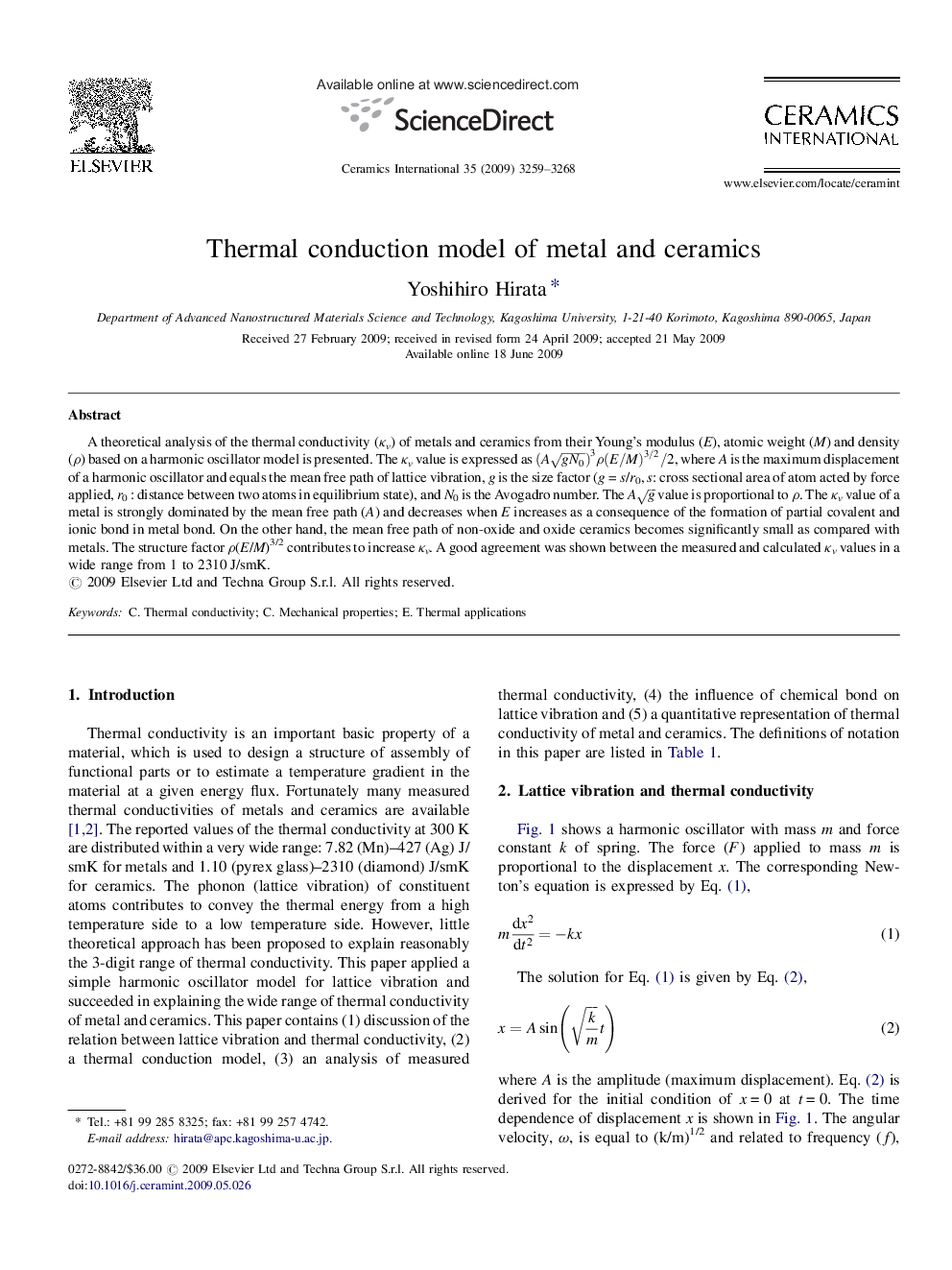| Article ID | Journal | Published Year | Pages | File Type |
|---|---|---|---|---|
| 1463315 | Ceramics International | 2009 | 10 Pages |
A theoretical analysis of the thermal conductivity (κv) of metals and ceramics from their Young's modulus (E), atomic weight (M) and density (ρ) based on a harmonic oscillator model is presented. The κv value is expressed as (AgN0)3ρ(E/M)3/2/2, where A is the maximum displacement of a harmonic oscillator and equals the mean free path of lattice vibration, g is the size factor (g = s/r0, s: cross sectional area of atom acted by force applied, r0 : distance between two atoms in equilibrium state), and N0 is the Avogadro number. The Ag value is proportional to ρ. The κv value of a metal is strongly dominated by the mean free path (A) and decreases when E increases as a consequence of the formation of partial covalent and ionic bond in metal bond. On the other hand, the mean free path of non-oxide and oxide ceramics becomes significantly small as compared with metals. The structure factor ρ(E/M)3/2 contributes to increase κv. A good agreement was shown between the measured and calculated κv values in a wide range from 1 to 2310 J/smK.
